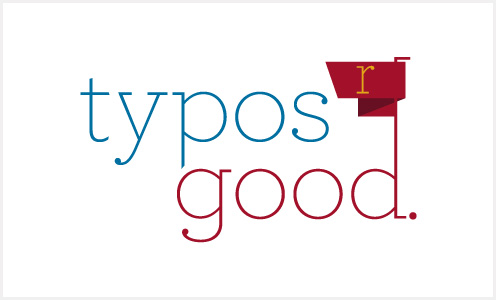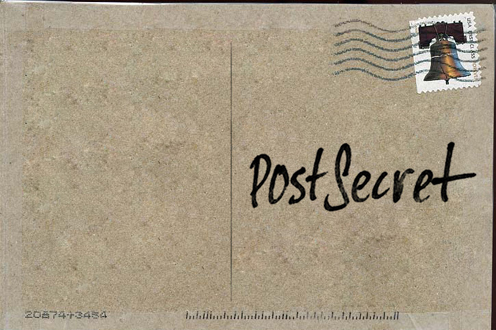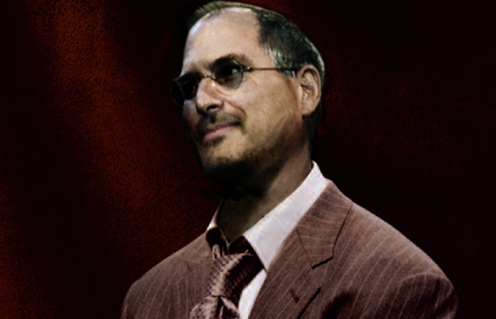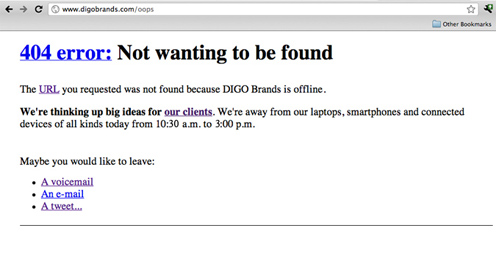By
Team DIGO | 11/10/2011 | in

If you’re normal, you think that because you’re noting everything important that’s said and agreed in a meeting that you’re taking notes in the most effective way. But the normal way of doing it is a drag. It misses one of the greatest kicks that note-taking can give a team.
In every meeting, someone should be taking public notes. If they’re entering notes into a computer, then the notes should be displayed on a screen. If it’s a conference call, then a shared internet-based screen should be employed.
When people see the output of a meeting take shape before their very eyes, the reinforcement works wonders. Soon, people begin to play a game together of getting their best ideas up on that board. They work to improve the meeting output in real time. Instead of collecting problems, they fashion solutions.
The principle is pretty simple. Recognition is reward. Most of us learned a bit about behavioral conditioning in our school days. We know that behaviors that are rewarded tend to increase. We know that the sooner the reward comes after the desired behavior, the better it works. Well, people like to see their ideas have an impact. They like to know they are heard and understood.
Imagine how much better this works than a group of people throwing their thoughts up into the air and suspecting that much of what they say has not even been heard. Or if heard, not registered. Or if registered, not quite gotten right. Or if gotten right, then never to be read or seen again. Or if seen again, not by the person or people from whom the individual most wants recognition. And perhaps credit will go to someone else, as it often does.
That which happens out of sight encourages paranoia, which leads to acting out in some and retreat or depression in others. That which happens in the light is encouraging and reassuring. It speeds up the progress of a team. So, in every meeting, have the note taker take notes in public. It works.
By
Team DIGO | 11/04/2011 | in

People in a hurry have to choose.
Choose a veneer of blamelessness. Or choose optimal progress.
It’s really that simple, and that difficult. Because people like to be blameless. They like to manage risk by trying to eliminate it. They want to appear all buttoned up, all the time. They don’t want be seen to fail, even in small ways on less important things.
But what if your choice is to risk failing on the small things versus a certainty of falling behind on the essential things?
My hero Abraham Lincoln was famous in his time for his rumpled clothes and crazy hair. He had a nation to save! He expressly believed in conceding less important things to achieve essential things.
Steve Jobs wore the same uniform every day. Black cotton polo shirt. Jeans. The Michael Jordan of meticulous choosing, he didn’t waste a minute deciding what to wear in the morning.
Our presentations have typos.
This is frankly divisive. Some people see a typo as a symbol of all that is unholy and shoddy in American enterprise, as a malodorous portent of some deep rot. In some cases, this is simply perfectionism rearing its fearful head. Some people are perfectionists. These people simple don’t belong in fast growing mid-market organizations, unless of course they are in accounting, collections, compliance, proofreading or production.
Others may be laboring under the drag of prejudices acquired in a pre-digital world. A newspaper published with a typo – as even the world’s-greatest newspaper, the New York Times, is every day — is irreparable. Billboards and brochures are expensive and embarrassing to fix. That’s why we employ professional proofreaders and have extensive processes for combing through documents throughout the production process. I’m knocking wood as I write this, but we haven’t had an error in a printed piece for well over a decade – a truly rare track record for any agency. But different levels of vigilance are appropriate to different media. A web post can be instantly updated. Timeliness might be the greater value. See the forest for the trees.
Personally, I hate a typo that affects my experience. If I’m in the middle of a story and my attention is suddenly drawn to a misspelling, the spell is broken (which is a neat little phrase with a nice confluence of meanings here). Elsewhere, not so much. So, not all typos are created equal. In early drafts, concept presentations, and throughout our process, short of pre-production, they are symbols that we’re putting first things first. First get the strategy right. Then get the concept right. Then get the plan right. Ultimately, get everything executed brilliantly and correctly.
Did Lincoln have pride in his work? He took pleasure from a successful outcome. He said on many occasions that he would save the Union any way he could – any way. There is no question he could be a meticulous craftsman. His law partner and great friend, Herndon, said that he could work for hours or days perfecting a single phrase. But not all of them. Not in those days, long before television and the Internet, when people expected four-hour speeches and seven-hour debates for their entertainment.
After he was President, it was different. He knew that everything he said could be used against him and his cause, so he avoided speaking extemporaneously, and he used two secretaries to write and proof and check.
Same guy, two different contexts. When Lincoln was a fast-growing visionary brand, he perfected the things that needed to be perfect, and he let the other things go. When he became CEO of a large, troubled enterprise, he reprioritized.
Do your priorities fit your situation and your ambitions? I like to see symbols that our priorities are in the right place.
So, when I see a well-placed typo, I smile. Those typos are good.
By
Team DIGO | 11/02/2011 | in

PostSecret is the Haiku of the web. And it’s long been a very highly trafficked site. It’s so simple. People submit postcards, which conform to simple guidelines, sharing their secrets. PostSecret posts them online, and perhaps ads a bit of the comments they inspire.
What can you learn from PostSecret? To give people a simple art form, with rules that make success more likely. Discover something that needs to be expressed and give them the chance to express it.
DIGO did this when we created, “Talk Back To Cancer” for Memorial Sloan-Kettering Cancer Center. We knew people had an intense relationship with their cancer, so we built a simple social outlet for them.
It worked.
By
Team DIGO | 11/01/2011 | in

If you ever doubt the power of what we brand builders do, pause briefly to consider the Marlboro Cowboy.
This image helped to addict millions. This after it transformed a minor women’s cigarette brand into a legendary masculine number one brand smoked by men and women alike.
Consider what that word “Cowboy” means to the American psyche, and indeed to the world. This is branding and image-making par excellence.
COW – a large, dumb, female, herbivorous, grazing, milk-giving animal.
BOY – a minor, youthful, pre-pubescent, subordinate, pre-man.
Yet, put these two short insults together and you’ve got the archetype of American manliness and independence. That’s branding!
CIGARETTES – short, noxious, smelly, poisonous, expensive, cancer sticks…
…loved the world over as symbols of manly independence. A significant factor holding down the average life expectancy while raising our national healthcare costs. That’s branding too.
We who have trained our talents to wield this power to influence can take both inspiration and pause from the legacy of the Marlboro Cowboy. Let’s use our powers to promote the good guys and the wholesome things.
Edward Bulwer-Lytton said, “The pen is mightier than the sword.” Today, the brand is more powerful than the truth. Use with caution.
By
Team DIGO | 11/01/2011 | in

At DIGO, we’re often asked how we approach our e-mail and other direct response testing. Do we have a list of variables and guidelines?
The answer is, at DIGO we don’t so much have a list as a testing philosophy. Of course we read Direct Marketing News, belong to the associations, read their websites, attend webinars, get newsletters, judge and attend award shows, and generally do all we can to get into the stream of information that professionals in the industry ought to digest.
Lists of testing options and opinions based on that sort of information can be accessed with a few Google searches, and the advantage of Google is that the world is continuously updating the results.
But at DIGO, our philosophy leads us to use that stream of information differently and, we have good reason to believe, to get better results.
Most e-mail (and most direct) marketers are Incrementalists. We’re Optimizers.
An Incrementalist wants to isolate a variable and produce a measurable lift. Four-word subject lines vs five-word subject lines, for example. Three paragraphs vs. two. Picture vs. no picture. Color vs. B&W. Picture on the right vs. picture on the left. There is nothing to say that this kind of testing can’t create large lifts and return on investment, except that it usually doesn’t. People trained at large companies need only create small percentage lifts in order to generate adequate returns on investment. Smaller companies, and more ambitious companies who want to win over many more people, are better off going for not just incremental improvement, but optimal results.
This is messier, and you will typically have to rely on intuitive understandings of why one cell outperformed another.
Optimal testing is built on insight-based hypotheses. Instead of artificially limiting the expression of the hypothesis in order to isolate variables, the implications of the hypothesis are extended to each touchpoint.
For example.
INSIGHT: Growth oriented business leaders are drawn to solving problems and answering key questions.
CREATIVE IDEA: Are You An Incrementalist? Or an Optimizer?
This insight would affect the subject line, the headline, the imagery, if any, the design, the call to action, perhaps even the offer. A lot of work… but worth it if the insight is as powerful as I suspect it might be.
INSIGHT: E-mail marketing is undergoing a revolution, and growth-oriented marketers are hungry for information.
CREATIVE IDEA: Optimizing Your E-Mail Channel.
INSIGHT: Growth-oriented brand and business leaders are drawn to a challenge.
CREATIVE IDEA: Your email testing strategy isn’t cutting it.
INSIGHT: Brand-driven growth leaders are inherently curious. Many read widely.
CREATIVE IDEA: The Freakonomics of E-Mail Testing.
Beyond the insight-centered hypothesis that drives each test for us, we approach the development of an email as iterative direct response and engagement design. Therefore, the Subject Line must compete with the other subject lines in the Inbox. It’s important to design in context. Look, for example at how information is displayed in the most popular e-mail providers’ applications. The “From” for example, might be a worthwhile variable. The job of the subject line is to get the email opened. The job of the first impression of the opened email is to get the email read and to build excitement toward the call to action. The job of the call to action is to get clicked. It is productive to test ways to increase interest, but also to test ways to reduce friction or resistance. Friction or resistance would involve factors that discourage response, such as fear of commitment, or fear of accidentally losing privacy or autonomy by responding.
Incrementalism in direct response testing can be a narcotic. Your results are better, and you feel you’re learning valuable things. The money you’re leaving on the table is out of sight and out of mind. So, you feel you’re doing your job pretty well. Often you don’t even notice that an Optimizer has eaten your lunch until it’s too late.
“If we keep doing better and better, then how come we’re losing market share?” The right sort of leader will start asking some sharp questions. The wrong sort of boss might begin to lose faith in direct response marketing altogether – decidedly the wrong conclusion. But that’s the way of the world. Optimizers gain power, credibility and budget authority. Incrementalists have orderly, comfortable, and brief tenures punctuated by complete loss of control when someone else must take responsibility and set things right.
Which is not to say that there is never a time or place for incrementalist experiments. We’ll talk about multivariate testing dos and don’ts in another entry.
By
Team DIGO | 10/31/2011 | in

The first “killer app” of the Internet is fast becoming the most important. Lowly E-mail!
Back in 1999, when Seth Godin wrote the groundbreaking book Permission Marketing, he predicted that an increasing percentage of marketing messages would be, “anticipated, personal and relevant.”
It was a radical idea at the time. E-commerce marketers with their frictionless webs were doing just fine, thank you. But today, the battle is on for the inbox.
For example, a French company by the name of Vente-Privee invented a little virus that began to replicate. It’s spawned the whole “flash sale site” category. The numbers behind this revolution are impossible to ignore. In the traditional e-commerce model, two percent of visitors to a site might become customers. In the permission model, marketers convert ten, twenty, even thirty times more!
The War of the Inbox is for a special relationship with consumers. Ultimately, it’s an ideal that is going to be rare, because attention is finite. Still, Inbox Appointment Marketing is the holy grail for those few marketers that can craft compelling offers and keep them coming day after day.
Whether or not that’s you, that is your competition.
By
Team DIGO | 10/27/2011 | in

Marty Staff, our client at Joseph Abboud, told us about a call he’d received from Steven Jobs, the CEO of Apple. Marty’s company had their flagship store in a prime location in New York City, and Steve was looking for the perfect spot for the first New York City Apple Store. And here’s the first interesting thing: Jobs didn’t want Joseph Abboud’s store, he wanted the store next door. But his design scheme envisioned using half of Joseph Abboud’s storefront for his super-amazing Apple Store sign. Jobs decided that this was something that he must have for Apple. If he couldn’t get it, then the whole plan wouldn’t work for him. It was all or nothing.
So the CEO himself gets on the phone to “talk” to CEO Staff. What ensued was a two-hour sellathon during which Jobs tried everything in his bag of tricks to get Marty to give up the storefront to Apple. He spent a good part of the time on how perfect the new sign would look! At the end of the call, Marty wouldn’t and couldn’t give up half his valuable storefront, but he came away impressed by Job’s salesmanship and commitment. The man would not give up. He wanted the best for Apple and he would do what he needed to do to get it.
Successful salespeople fail more. This is precisely because they pitch more. They push themselves into situations only a great salesperson can close. That’s why real sales professionals scoff at “order takers.” Anyone can take an order. Selling a difficult prospect is something to take pride in.
There are, of course, other ways to think about it. High Probability Selling takes the opposite attitude. The world is full of prospects. So you make sure you’re only spending time and breath on people who are definitely in the market for the solution you’re selling.
Selling at speed – which is a core competency you need if you’re growing a mid-sized business — means deciding which approach to take in real time. When, as in the case of the Apple/Joseph Abboud Store, there is only one in the world, you’ve got to go for it. Turning a low probability sale into a sale is what it’s all about. You don’t need too many of those to be a legend.
For the rest, remember that marketing is there to reduce the need for selling. Reduce, not eliminate. Selling will always be essential. But when you have the right people, the right product, and the right offer at the right time, sales pros can focus. And order takers can do their thing too.
By
Team DIGO | 10/24/2011 | in

Agencies should spend a lot of time coming up with ideas for clients.
It’s a simple thing, but the wall of information we all deal with can get in the way. That’s why, at DIGO, our most productive days tend to be Offlining Days.
What is Offlining? It’s a campaign we created in response to our growing attachment to devices, to encourage people to spend a little less time looking at screens and a little more time paying attention to the people in front of them.
This Friday, we’ll practice what we preach and take the entire agency offline from 10:30. Everyone in the office will put down their phones and turn off their computers. We’ll even take our website offline.
Every time we do this, we’re blown away by the results. We talk, we listen, and we focus intensely on generating big ideas for our clients, uninterrupted by the outside world if only for a little while. And we often emerge with ideas that dramatically change things for our clients.
So don’t be alarmed if we don’t answer your calls or respond to emails right away. We’ll be right back, hopefully as a brighter, more inspired agency. (And Caitlin will be at the front desk answering our main line all day, just in case emergencies crop up.)










